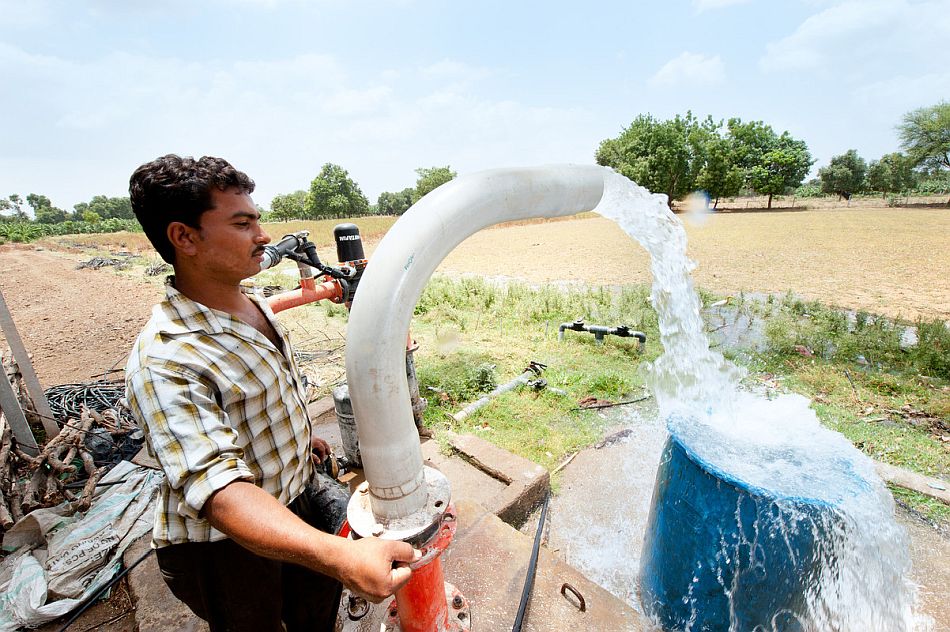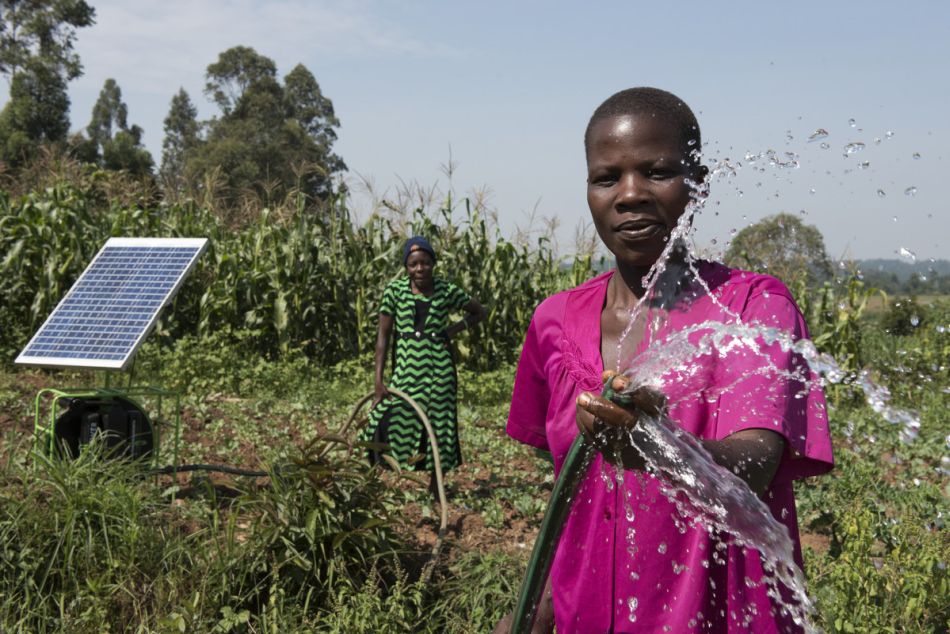Making the invisible visible: A chat with groundwater expert Dr. Karen Villholth, Principal Researcher, IWMI
Interviewed by Samurdhi Ranasinghe, Senior Communications Officer, IWMI

In 2022, groundwater is not only the focus of World Water Day, but also a key area of emphasis in the U.N. World Water Development Report. But why should we worry about this water below our feet, a resource that is largely out of sight and out of mind?
To answer that question, IWMI recently spoke with groundwater expert Dr. Karen Villholth to learn more about the ways groundwater can serve as a lifeline to help us more effectively navigate the escalating climate crisis.
With more than 30 years of experience in the field of groundwater, Karen has worked with IWMI for 13 years — first based at IWMI headquarters in Sri Lanka, and then later in South Africa. She has worked on advancing groundwater sustainability at both the local and international levels, and describes her work to date as a series of long hauls to have groundwater receive greater recognition as a fundamental asset for the survival and resilience of people and the planet.
Karen’s capacity-building efforts and partnership cultivation have helped bring groundwater to the forefront of the development agenda in Africa, through the support of the African Ministers’ Council on Water (AMCOW). She highlights this as a major recent achievement: “There is now a long-term and high-level commitment in Africa to invest resources in building infrastructure and institutional capacity for its sustainable development,” she says, emphasizing that efforts to strengthen “water security, food security, and resilience are badly needed.” Given its centrality to many of the U.N. Sustainable Development Goals (SDGs), groundwater “is an invisible piece of the puzzle to resilience, sustainability, and natural ecosystems,” she adds, “more important today than ever.”
Continue reading below to learn more about what Karen has to say about this vital resource.
- Why should we bother about groundwater?
- How does groundwater become a solution for people without access to safe water?
Groundwater is key to survival of humans, livestock, wildlife, vegetation, and ecosystems. It is widely available, under the ground, and even in dry areas. For example, in Africa, most rural communities rely on groundwater as their main source of water. It goes without saying that maintaining these resources and the infrastructure to secure safe access to groundwater, like wells and boreholes, is crucial, especially for women who otherwise spend significant amounts of their productive time collecting water for their households. Groundwater is indispensable for an estimated half billion people in sub-Saharan Africa.
- Does groundwater play a crucial role in mitigating climate change?
Naturally, groundwater provides a more climate-resilient resource. It remains protected underground from extreme heat. It is accessible to tie over dry or drought periods, as long as it gets replenished again during the wet seasons. This leveling out of dry and wet spells is the key virtue of groundwater in combatting climate change. It’s not rocket science, and has been used for millennia in traditional cultures and even by animals who have learned to dig for water. The innovative part of groundwater and climate change adaptation today is that we ‘engineer’ groundwater access and replenishment to suit our needs, e.g. through dedicated drought infrastructure and managed aquifer recharge, and this is something we will see a lot more of.
- Is the quality of groundwater getting better or worse?
- Will we ever run out of groundwater?
No, we will not run out of groundwater. But we may run out of easily accessible and fresh clean groundwater, making its availability and access increasingly difficult and costly. Prevention, to avoid depletion and degradation, is the key. We leave a very poor legacy for our children if we do not act today. We are increasingly seeing new, often little-replenished reserves of groundwater being developed as demand increases. Humans will increasingly strive to settle in areas where groundwater is secured and well-managed for the foreseeable future. Wealth will prove to follow where there is good groundwater, but this may also entice competition as groundwater tends to be the last resort. Hence, there is the need for more proactive and adaptable approaches.
- What are the major threats to groundwater depletion?

- Can the agriculture sector function without groundwater?
Groundwater is essential for food production. The water gap arising from increasing food demand over the last half century has to a large extent been filled by groundwater, in a mostly unrecognized — and unsustainable — manner. As this resource is increasingly tapped, with no new easily accessible freshwater resource alternative available at the scale of groundwater, it is clear we have to think creatively and find new solutions to support the ever-increasing food demand. It is estimated that by 2050, we will need to grow 60% more food to feed a world population of 9.3 billion. Also, water demands for food are increasingly being trumped by water demand for urban areas and industry, so agriculture has to step up to use groundwater more sustainably, proper groundwater-sensitive economic incentives have to be put in place for farmers, recycling our waters must be prioritized, and at the same time we all limit our ‘foodprint’.
- Can you highlight some of the solutions?
- What is being done right now, and is it enough?
- How can we accelerate global action for sustainable groundwater management?
We know the issues. Now we need the attention of global leaders and decision makers. In the inland food bowls of China and the USA, which produce almost 40% of the global food, groundwater is running out. Economic drivers will help shift production to new potential areas, like South America and sub-Saharan Africa, but we cannot move huge delta populations and need to find local solutions.
Achieving the SDGs requires that groundwater is developed and managed properly, with priority for 1) basic supplies for domestic use, WASH, and small-scale productive uses in poor countries; 2) protecting critical groundwater-dependent ecosystems (GDEs); and 3) ensuring global food production. Including more explicit and well-formulated criteria for groundwater sustainability in global development goals are also needed, like the present one for SDG 6.4.2 on environmental flows. Others need to follow, e.g. on how much countries are doing in terms of protecting their land, GDEs, and actively enhancing and managing groundwater recharge.
More economic and political incentives need to be developed and put in place, similar to carbon credits. This is an unexplored field with potential going forward. The groundwater crisis and the climate crisis have many similarities and are closely linked. So they need to be solved together. After all, countries and regions that manage their groundwater resources sustainably will enjoy water security and resilience deep into the future, even under a changing climate.

